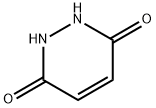NAPTALAM
Synonym(s):N-(1-Naphthyl)phthalamidic acid;Anti-Huntingtin-interacting protein-like protein;Anti-SEC14 and spectrin domains 1;Anti-SOLO;Solo
- CAS NO.:132-66-1
- Empirical Formula: C18H13NO3
- Molecular Weight: 291.3
- MDL number: MFCD00037725
- SAFETY DATA SHEET (SDS)
- Update Date: 2025-01-27 09:38:02

What is NAPTALAM?
Chemical properties
solid with an unpleasant odour
The Uses of NAPTALAM
Selective preemergence herbicide used to control some grasses and many broadleaved weeds in soybeans, cucurbits, asparagus, groundnuts, potatoes and established woody ornamentals.
The Uses of NAPTALAM
N-(1-Naphthyl)phthalamic Acid is an auxin-transport inhibitor in plants resulting in the attenuation of root growth through decreasing the cell production rate.
What are the applications of Application
N-1-Naphthylphthalamidic acid is an inhibitor of IAA transport
Definition
ChEBI: A dicarboxylic acid monoamide which results from addition of one equivalent of 1-naphthylamine to phthalic anhydride.
General Description
Naptalam is a purple crystalline solid, which can be used as an anti-geotropic agent and as an auxin (IAA) antagonist in plants.
Agricultural Uses
Herbicide: Used as a selective pre-emergence herbicide to control broadleaf weeds and grasses in soybeans, cucumbers, melons, peanuts and woody ornamentals. Not currently registered for use in the U.S. or EU countries. There are 25 global suppliers.
Trade name
N-1-naphthyl- Trade Names: ALANAP®[C]; ALANAPE®; ANCRACK®; DYANAP®; GRELUTIN®; MORCRAN ®; NAPTRO®; NIP-A-THIN®; PEACH-THIN®; RESCUE®[C]; 6Q8®; SOLO®
Environmental Fate
Soil/Plant. Degrades in soils and plants forming 1-naphthylamine and phthalic acid
(Hartley and Kidd, 1987; Humburg et al., 1989). Residual activity in soil is limited to
approximately 3 to 4 months (Hartley and Kidd, 1987).
Chemical/Physical. Forms N-(1-naphthyl)phthalimide at elevated temperatures (Worthing
and Hance, 1991). Naptalam will precipitate as the free acid in very acidic waters
or in extremely hard waters (Humburg et al., 1989).
Purification Methods
Crystallise the herbicide from EtOH (m 183-185o). The Na salt has m 185o. [Beilstein 12 H 1236, 12 I 525, 12 III 2876.]
Properties of NAPTALAM
| Melting point: | 185-190 °C |
| Boiling point: | 433.31°C (rough estimate) |
| Density | d420 1.40 |
| refractive index | 1.4800 (estimate) |
| storage temp. | Sealed in dry,Room Temperature |
| solubility | DMF: 25 mg/ml; DMF:PBS (pH 7.2) (1:3): 0.25 mg/ml; DMSO: 15 mg/ml |
| form | Solid |
| pka | 3.45±0.36(Predicted) |
| form | neat |
| color | White to Gray to Dark blue |
| Water Solubility | 0.2g/L(room temperature) |
| Merck | 14,6418 |
| BRN | 2814102 |
| Stability: | Stable. Incompatible with strong oxidizing agents. |
| CAS DataBase Reference | 132-66-1(CAS DataBase Reference) |
| EPA Substance Registry System | Naptalam (132-66-1) |
Safety information for NAPTALAM
| GHS Hazard Statements |
H412:Hazardous to the aquatic environment, long-term hazard |
| Precautionary Statement Codes |
P273:Avoid release to the environment. |
Computed Descriptors for NAPTALAM
New Products
Indole Methyl Resin tert-butyl 9-methoxy-3-azaspiro[5.5]undecane-3-carboxylate Boc-His(Boc)-OH 2-CTC Resin 4-Chloro-7-tosy1-7Hpyrrolo[2,3-d]pyrimidine 5,7-Dibromo-1H-indole 2,5-dichloro-N-hydroxy-4,6-dimethylpyridine-3-carboximidamide 2,2-Dimethoxy-7-azaspiro[3.5]nonane hydrochloride 4-chloromethyl-5-methyl-1,3-dioxol-2-one (DMDO-Cl) R-2-BENZYLOXY PROPIONIC ACID 1,1’-CARBONYLDIIMIDAZOLE 1,1’-CARBONYLDI (1,2-4 TRIAZOLE) N-METHYL INDAZOLE-3-CARBOXYLIC ACID 4-((2-hydroxyethyl)thio)benzoic acid 1-(TERT-BUTOXYCARBONYL)-2-PYRROLIDINONE Methyl 6-methylnicotinate 3-Pyridineacrylic acid tert-Butyl carbazate TETRAHYDRO-2H-PYRAN-3-OL 2-((4-morpholinophenylamino) (methylthio) methylene) malononitrile 3-(4-morpholinophenylamino)-5-amino-1H-pyrazole-4-carbonitrile 2,4-dihydroxybenzaldehyde 1,3-Diethyl-1,3-Diphenylurea Methyl 2-methylquinoline-6-carboxylateRelated products of tetrahydrofuran








You may like
-
 N-(1-Naphthyl)phthalamic Acid CAS 132-66-1View Details
N-(1-Naphthyl)phthalamic Acid CAS 132-66-1View Details
132-66-1 -
 Naptalam 95% CAS 132-66-1View Details
Naptalam 95% CAS 132-66-1View Details
132-66-1 -
 Naptalam CAS 132-66-1View Details
Naptalam CAS 132-66-1View Details
132-66-1 -
 Anti-SESTD1 antibody produced in rabbit CASView Details
Anti-SESTD1 antibody produced in rabbit CASView Details -
 Solo (Betacyfluthrin 8.49% + Imidacloprid 19.81% OD)View Details
Solo (Betacyfluthrin 8.49% + Imidacloprid 19.81% OD)View Details
132-66-1 -
 Pyridine 99.5% HPLC /UV SpectroscopyView Details
Pyridine 99.5% HPLC /UV SpectroscopyView Details
110-86-1 -
 Dibutyl PhthalateView Details
Dibutyl PhthalateView Details
84-74-2 -
 Thiourea 99% ARView Details
Thiourea 99% ARView Details
62-56-6
